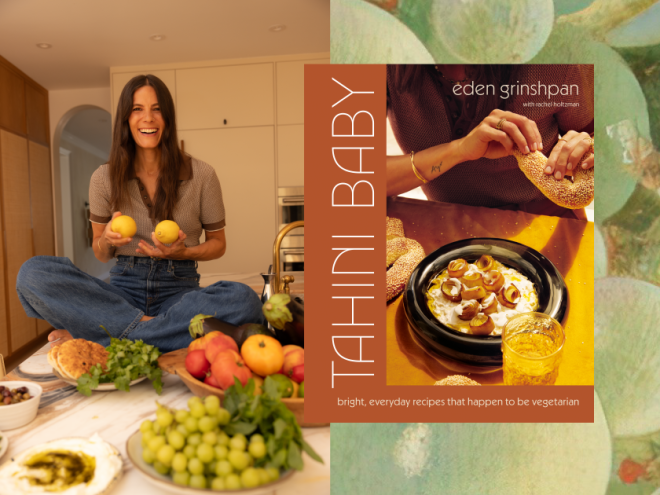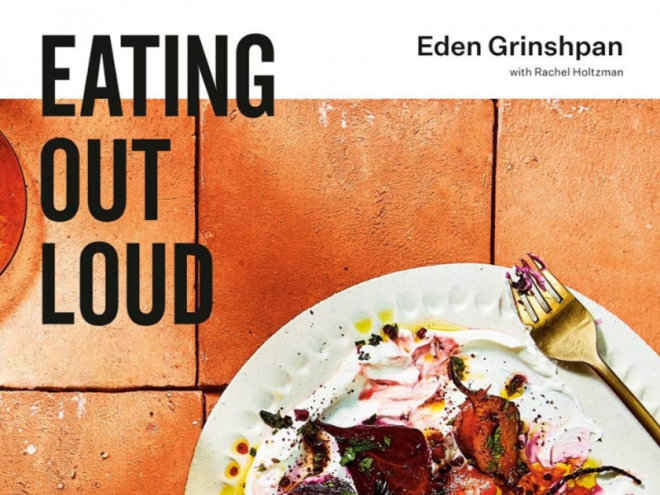Israeli food today is a vibe. It has a particular style — lots of herbs, a subtle or overt emphasis on condiments, and an embrace of ingredients and dishes from across the Diaspora. There is an energy to it: eternally optimistic, carefree, and seemingly uncomplicated. And ever since Ottolenghi and Tamimi’s iconic Jerusalem (2012), Israeli food has become mainstream in cookbooks, social media, and restaurants around the world. Chefs, restaurateurs, social media influencers, and home cooks alike have all flocked to it, embracing the vibe (and a whole lot of tahini). Eden Grinshpan, who happens to be all four of the above, is the author of Tahini Baby, a new cookbook that highlights the expansive vegetarian dishes found in Israeli kitchens and homes.
Let’s address the elephant in the title: Grinshpan’s tahini recipe is great. It’s simple, creamy, and very adaptable. As a baseline for many dishes, this condiment slaps. And to keep the music metaphor humming, some of the dips, notably the light-as-air-hummus and leek masabacha, can be their own foot-stomping solo courses or a delightful addition to any menu. Masabacha, a rustic hummus with chunks of chickpeas smothered in tahini, is even richer in texture and umami with Grinshpan’s addition of braised leeks, tempered by their own sweetness and the bright lemon that highlights the sheer glory of leeks.
The first two chapters will help you understand how flavors are layered into each dish. They are effectively a lexicon for Tahini Baby: a primer of the sauces, spices, and seasonings used throughout as well as the “condiments, dips, and all the noshes,” with callouts for specific recipes that rely on them. With this knowledge in tow, you will be able to flavor any forthcoming Israeli meal from an impromptu snack to a holiday feast, and everything in between.
Every recipe in this book is accompanied by a photograph. Beyond inspiring your own plated dishes and social media posts, these photos reinforce Grinshpan’s thesis that this food is meant to be shared with loved ones. There are many hands (thoughtfully placed) everywhere, evoking the loving act of sharing and feeding others, and also reminding readers that eating Israeli food can be informal and tactile. Grinshpan also includes liner notes describing these dishes, sharing when she serves them and with what, and also describing the flavors in her own effusively adverbial idiolect. If you like her social media voice (and considering she has over 400,000 Instagram followers, I suspect you might), then you will appreciate these tasty descriptors and probably soon find them sticky-noted, tabbed over, and splattered with some of your new favorite tahini sauce.
Avery Robinson is a Jewish nonprofit professional living in Brooklyn. In his spare time, he freelances as an editor, culinary historian, cofounder of the climate change nonprofit Rye Revival, and manager of Black Rooster Foods. His writings have appeared in Marginalia Review of Books, Jerusalem Post, TabletMag, and The Forward.





